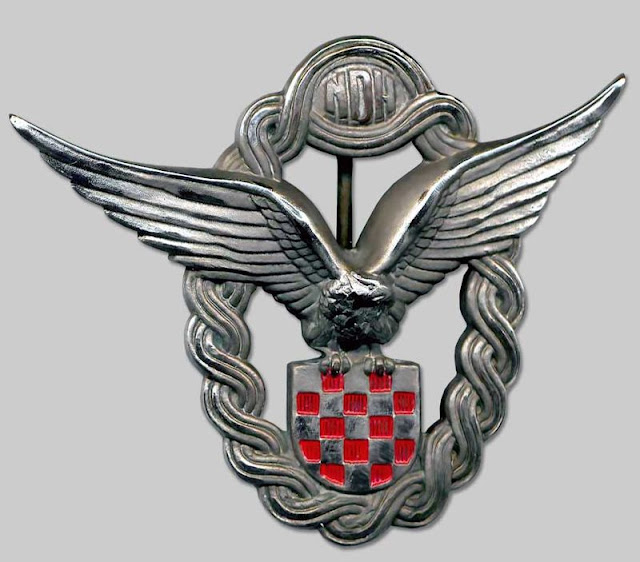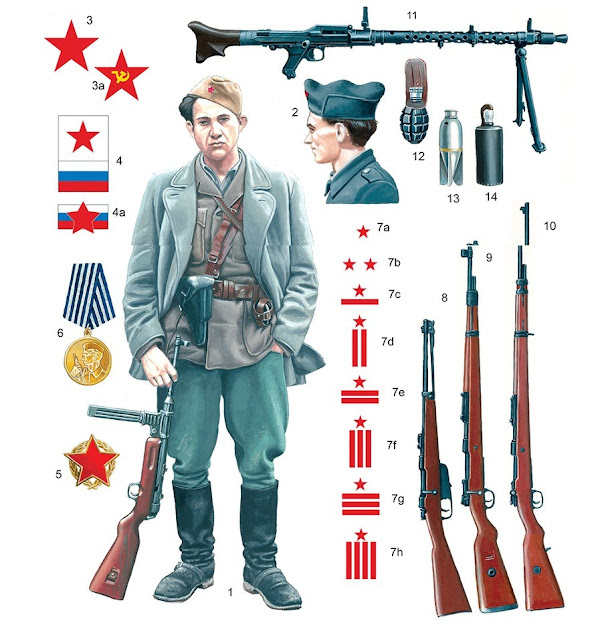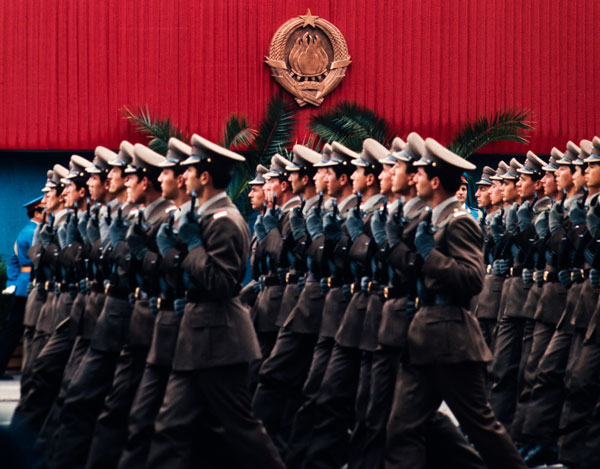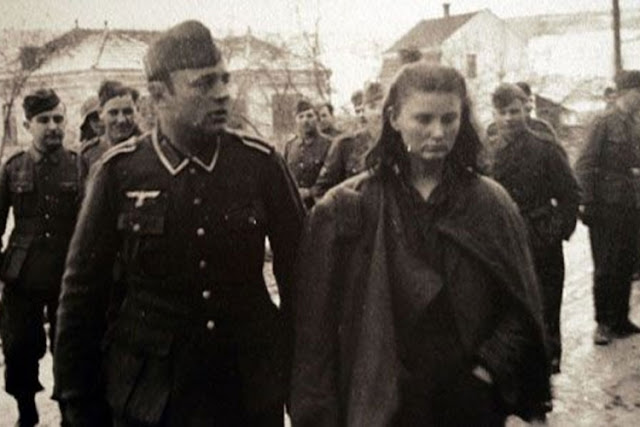The Air Force of the Independent State of Croatia
 |
| Air Force badge |
The NDH Air Force was established on April 19, 1941, with the appointment of Vladimir Kren as Commander of the Air Force Department. In June 1941, an agreement was reached with the Germans on the establishment of permanent airports and the takeover of captured aircraft from the former Kingdom of Yugoslavia. As a result of this agreement, the NDH Air Force established two airports: Zagreb and Sarajevo. On September 14, 1943, Adalbert Rogulja became the head of the Battalion, who remained in that position until the disintegration of the Independent State of Croatia. During its existence, the NDH Air Force was reorganized several times, and during the reorganization, the name was also changed, so that from February 1943 it was called the Croatian Air Force (HBZ). The command published the semi-monthly magazine Hrvatska krila.
After the creation of the NDH Air
Force, it was necessary to procure aircraft. Due to the impossibility of
procuring aircraft from Germany, an agreement was reached to recruit obsolete
aircraft that were part of the army of the Kingdom of Yugoslavia into the Air
Force of the Independent State of Croatia. The planes were collected at various
airfields throughout Serbia so that the Air Force received many different
models, which created many problems during pilot training as well as during
maintenance. Due to the impossibility of procuring parts, losses, and
defections to the partisan side, the NDH Air Force always had problems with the
number of sufficiently correct aircraft to perform basic operations. Later, the
NDH Air Force procured aircraft from Italy (since 1942), and after the
capitulation of Italy, the possibility of procurement was reduced so that only
in 1944 complete squadrons (flocks) of Messerschmitt Bf 109 arrived from
Germany.
 |
| Line-up of ZNDH Caproni Ca.310 light bombers at Zagreb's Borongaj airfield, 1942. |
Airfields:
Zagreb: Lučko, Borongaj and Sveta
Nedelja
Sarajevo: Rajlovac
Banja Luka: Zalužani
Mostar (after the capitulation of
Italy)
Secondary airfields
Bjelovar
Karlovac
Križevci
Slavonski Brod
Kutina
Samobor
Koprivnica
In co-operation with the German
military, the NDH Air Force invited officers and NCOs of the Kingdom of
Yugoslavia who were ethnic Croats (there were about 500 of them among the
officers and about 1,600 among the NCOs) - and who were mostly in German
captivity - to join in the ranks of the NDH Air Force; which also made
available a significant number of aircraft, which mostly fell into the hands of
the Germans at captured airports in Serbia. Most of the best among about 300
Yugoslav aircraft - especially the very modern Bristol Blenheim I light bombers
- ended up with other German allies (20 in Finland, 6 in Romania). 6 good
Dornier Do 17s ended up in the Bulgarian Air Force and 6 Hawker Hurricane
fighters in the Romanian Air Force. The NDH Air Force received much obsolete
light aircraft from the RZ of the Kingdom of Yugoslavia, but it still got hold
of 8 Bristol Blenheim.
 |
| The Italian designed and built Fiat G.50 was the first relatively modern fighter aircraft available to the ZNDH in reasonable numbers. Some were still in service in 1945. |
The beginning of the
anti-partisan war was greeted by the NDH Air Force with several dozen obsolete
French scouts / light bombers Potez 25 and Breguet 19, which could carry up to
200 kg (Potez 25) and 400 bombs (Breguet 19), respectively. In reconnaissance
and bombing operations against the enemy, which had no air defenses, these
planes proved suitable and were used extensively for logistical support to
isolated military positions that were difficult or not at all supplied by land.
Dozens of Yugoslav biplanes Zmaj Fizir will soon be used for similar functions,
which, thanks to their simplicity, will prove to be durable: some of these
aircraft will survive the war and will then be "inherited" from the
NDH Air Force by the Yugoslav Air Force.
The NDH Air Force was trying to
procure more modern aircraft, the first of which were one excellent Italian
three-engine bomber Savoia Marchetti SM.79, and one Czech Avia Fokker. It was
not until 1942, when the NDH area was already affected by heavy fighting, that
the NDH Air Force procured 10 new Italian Caproni Ca.311 M light bombers, which
had been previously ordered and paid for by the Kingdom of Yugoslavia. A dozen
Fiat G.50bis fighters arrived from Italy, and about twenty Avia F.l.3 school
planes arrived from the Czech Republic. By then, 11 Dornier Do 17K medium
bombers had arrived from the repair, and an additional three Bristol Blenheim
Ikarus, which were previously part of the Kingdom of Yugoslavia, but were badly
damaged. Thanks to these reinforcements, at the end of 1942 and in the first
half of 1943, the NDH Air Force was able to provide air support even for German
military forces deployed in the NDH area. However, nearly 40 aircraft were lost
due to breakdowns and infantry fire. On May 23, 1942, Franjo Kluz and Rudi
Čajavec fled with the Potez 25 and Breguet planes to the partisans.
 |
| The Morane-Saulnier M.S.406 was a French-designed fighter aircraft captured by Germany in 1940 and sold to the NDH in 1943. |
Further aircraft were difficult
to reach, and it was not until mid-1943 that about 30 overhauled Dornier Do 17
light bombers were sent from Germany. By the end of the year, over 40 captured
French Morane-Saulnier M.S.406 fighters would arrive from Germany. The Germans
also delivered 25 Beneš-Mráz Beta-Minor, which increased the fleet of light
aircraft suitable for reconnaissance and modest anti-partisan actions. After
the capitulation of Italy, the Germans handed over about 60 relatively modern
Italian aircraft to the NDH Air Force. By the end of 1943, the NDH Air Force
had almost 10,000 members, with almost 300 aircraft, of which perhaps a third
were modern fighter aircraft.
From the end of 1944 until the
middle of 1945, the NDH Air Force would lose about 250 planes in Allied
attacks, mostly while they were on the ground. Several planes were destroyed in
partisan attacks on airports. Deliveries of 39 new Messerchitta Bf 109s and
various other aircraft from Germany made up for these losses to some extent,
but fuel was getting weaker. In April 1945, the NDH Air Force practically
disintegrated, with several pilots fleeing by plane to the side of the
partisans or to the Allies in Italy.

Croatian Minister of the Armed Forces Ante Vokić is visiting Croatian Air Force volunteers at training in Stockerau
Part of the NDH Air Force
personnel was sent to Germany in 1941, where they were trained to fly German
bombers and fighters, wear German uniforms, take the German military oath, and
act as members of the German Air Force. They performed tasks in the territory
of the USSR, as the Croatian Air Legion. Of the pilots of that legion, Mato
Dukovac had 44 recognized victories in air battles, and Cvitan Galić 28.






Comments
Post a Comment